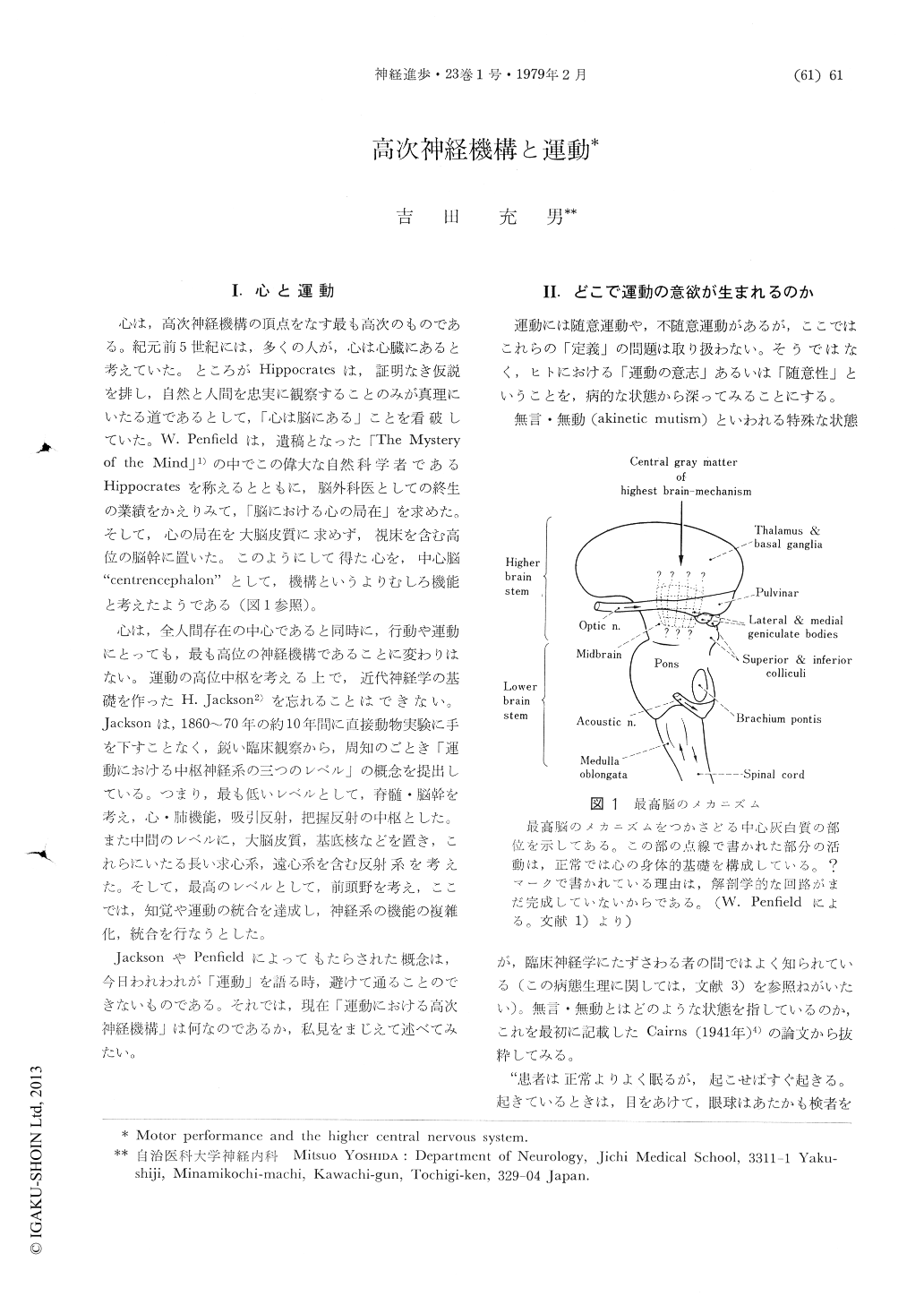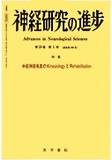Japanese
English
- 有料閲覧
- Abstract 文献概要
- 1ページ目 Look Inside
I.心と運動
心は,高次神経機構の頂点をなす最も高次のものである。紀元前5世紀には,多くの人が,心は心臓にあると考えていた。ところがHippocratesは,証明なき仮説を排し,自然と人間を忠実に観察することのみが真理にいたる道であるとして,「心は脳にある」ことを看破していた。W.Penfieldは,遺稿となった「The Mysteryof the Mind」1)の中でこの偉大な自然科学者であるHippocratesを称えるとともに,脳外科医としての終生の業績をかえりみて,「脳における心の局在」を求めた。そして,心の局在を大脳皮質に求めず,視床を含む高位の脳幹に置いた。このようにして得た心を,中心脳"centrencephalon"として,機構というよりむしろ機能と考えたようである(図1参照)。
心は,全人間存在の中心であると同時に,行動や運動にとっても,最も高位の神経機構であることに変わりはない。運動の高位中枢を考える上で,近代神経学の基礎を作ったH.Jackson2)を忘れることはできない。Jacksonは,1860〜70年の約10年間に直接動物実験に手を下すことなく,鋭い臨床観察から,周知のごとき「運動における中枢神経系の三つのレベル」の概念を提出している。つまり,最も低いレベルとして,脊髄・脳幹を考え,心・肺機能,吸引反射,把握反射の中枢とした。
Abstract
To answer the question "What structure of the brain is responsible for initiation of motor performance?", a specific neurological condition "akinetic mutism" is suggestive as a model. According to the original description Cairns et al. (1941) described"…… When awake and undis-turbed she made no movement save that her eyes would follow quite alertly……" To explain the akinetic mutism, they considered two systems in the brains; one was Vicq d'Azyr bundle and the other was the system which connected the hypothalamus with the medial nucleus of the thalamus.

Copyright © 1979, Igaku-Shoin Ltd. All rights reserved.


